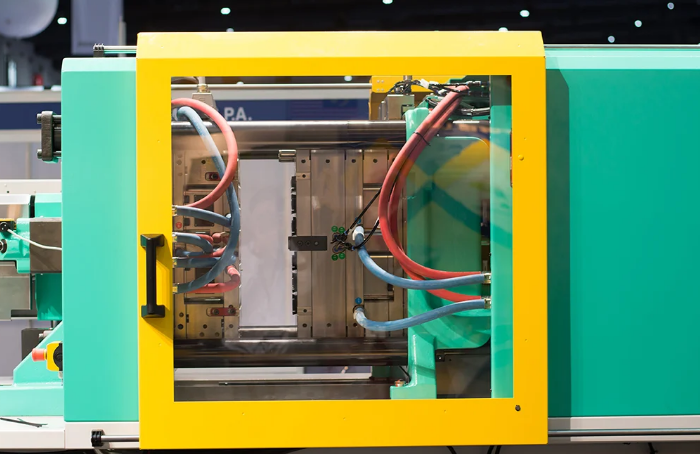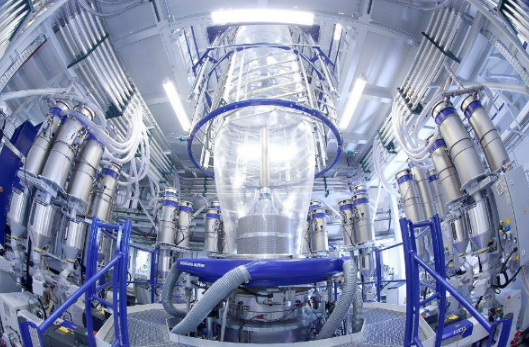The main problems in the extrusion molding process include melt flow consistency, die design challenges, and material degradation issues.
Material-Related Challenges in Extrusion Molding
Issues with Material Consistency and Quality
Material consistency and quality are crucial in extrusion molding, where even slight variations can significantly impact the final product. For instance:

Polymer Grade Variation: A change of just 5% in the polymer blend can alter the product’s tensile strength by up to 20%.
Filler Content Fluctuation: Variations in filler content, even as small as 2%, can affect the product’s weight, strength, and appearance.
Moisture Content: In plastics, a moisture content deviation of 0.5% can lead to surface defects and dimensional instability.
Addressing these issues requires rigorous quality control, potentially increasing inspection and testing costs by 10-15%. Achieving uniform material quality is crucial but can impact the overall efficiency and cost-effectiveness of the extrusion process.
Limitations in Types of Materials Used
The choice of materials in extrusion molding is limited by their physical and chemical properties. For example:
High-Performance Plastics: Some advanced polymers degrade at high temperatures necessary for extrusion. A temperature deviation of just 10°C can compromise the material’s integrity.
Metal Extrusion: Metals like steel, requiring over 1,000°C for extrusion, can increase power consumption by up to 50% compared to softer metals like aluminum.
These material limitations restrict the range of possible extruded products and can lead to increased costs when special materials are needed. For instance, using specialized high-performance plastics can raise material costs by 30-50%.
Navigating these material challenges is vital for successful extrusion molding operations, often involving a trade-off between material properties, process requirements, and cost.
For in-depth data and analysis on material challenges in extrusion molding, explore Material Challenges in Extrusion Molding on Wikipedia.
Machinery and Equipment Concerns in Extrusion Molding
High Equipment Stress and Wear
In the extrusion molding process, machinery undergoes significant stress and wear, primarily due to the high pressure and temperatures involved. Key components such as the extruder screw, barrel, and die are under constant strain. For instance:
Extruder Screw Lifespan: Typically, an extruder screw has a lifespan of about 12 to 18 months under normal operations, but this can decrease substantially with harder materials.
Barrel Wear: The barrel can withstand up to two years of continuous use, but abrasive materials can reduce this period by 30-40%.
Frequent machinery stress leads to wear and tear, necessitating regular maintenance and potential replacements to ensure optimal operation and product quality.
Maintenance and Replacement Costs
The high stress on extrusion machinery translates into significant maintenance and replacement costs:
Routine Maintenance Costs: These can account for approximately 10-15% of the total operational costs in a year. Regular maintenance is essential to prevent unexpected breakdowns and production halts.
Replacement of Worn Parts: The cost of replacing a worn extruder screw can range from $1,500 to $5,000, depending on the size and complexity. Replacing a barrel can be even more expensive, costing up to $10,000.
Proactive maintenance and timely replacements are necessary to mitigate the high wear rates in extrusion molding equipment, though they add to the operational expenses.
For further details on machinery and equipment concerns in extrusion molding, refer to Extrusion Molding Equipment on Wikipedia.
Process Control and Quality Issues in Extrusion Molding
Difficulties in Maintaining Uniform Product Quality
Maintaining consistent quality in extrusion molding products is a challenging aspect of the process. Fluctuations in material quality, extrusion conditions, and equipment wear can all contribute to variability in the final product. For instance:

Dimensional Variability: Even slight changes in the extrusion process can lead to variations in dimensions, which might exceed the tolerance limit of +/- 0.5% commonly expected in the industry.
Surface Defects: Issues like streaks, bubbles, or discoloration can arise, often linked to inconsistent material mixing or contamination.
Ensuring consistent product quality requires meticulous process control, which can lead to increased inspection and quality assurance costs, potentially affecting the overall efficiency of the operation.
Problems with Temperature Control and Material Flow
Precise temperature control and material flow are critical for successful extrusion molding, yet they pose significant challenges:
Temperature Fluctuations: A deviation of just 5°C from the optimal temperature can significantly affect the material’s viscosity and the final product’s properties.
Material Flow Inconsistencies: Uneven flow of the material through the die can result in products with uneven thickness or weak spots, especially when extruding complex profiles.
Managing these aspects of the process is crucial but can increase operational complexity and costs. Precise control systems are required, which can add to the equipment and maintenance expenses.
For more detailed insights into process control and quality issues in extrusion molding, consider exploring Extrusion Molding Process Control on Wikipedia.
Operational Efficiency and Cost Implications in Extrusion Molding
Increased Energy Consumption and Operational Costs
| Aspect | Details |
|---|---|
| Energy Consumption | Extrusion molding can require significant energy, often ranging from 30 to 250 kW per machine. |
| Cost Implications | High energy usage translates to increased electricity costs, which can constitute up to 30% of the total operational expenses. |
| Efficiency Factors | The efficiency of the equipment and the material being processed directly impact energy consumption. Older or poorly maintained machines consume more energy. |
Managing energy consumption is vital for cost-effective operation, but it often involves investing in more efficient machinery or optimizing the process, which can incur additional expenses.
Production Speed and Throughput Limitations
| Aspect | Details |
|---|---|
| Production Speed | Speed varies depending on material and product complexity, with average rates ranging from 0.5 to 5 meters per minute. |
| Throughput Limitations | Certain materials and complex profiles can significantly slow down production speeds, impacting throughput. |
| Cost and Efficiency Impact | Slower speeds result in lower production volumes, potentially increasing per-unit costs and affecting overall profitability. |
Optimizing production speed is a constant challenge, requiring a balance between maintaining quality and achieving efficient throughput.
For more comprehensive information on operational efficiency and cost implications in extrusion molding, visit Extrusion Molding Efficiency on Wikipedia.




